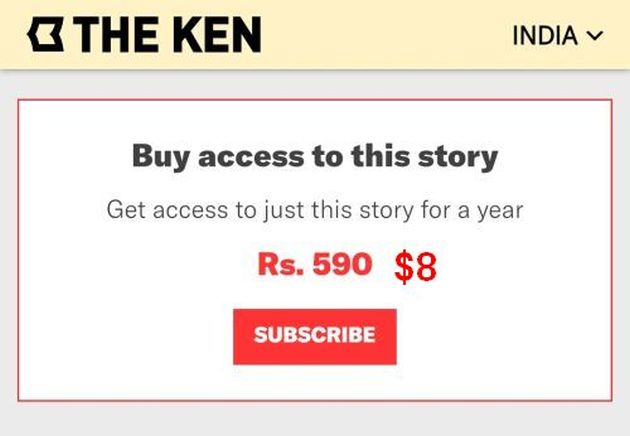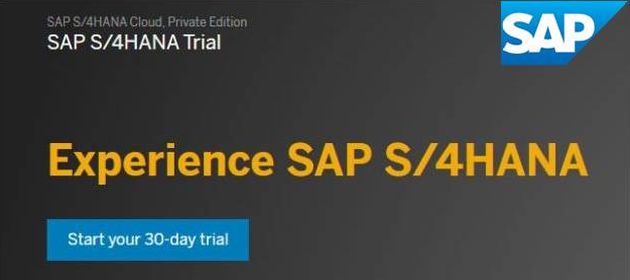When it comes to per article sales, everybody points to ready demand, takes supply for granted, and focuses on the fulfilment, mainly micropayments.
This has been going on for years during which many micropayments have come and gone, demand has skyrocketed as more and more media outlets have put their content behind paywalls, but per article sales are still not a thing.
Why?
In this blog post, I posit that it makes virtually no sense for publishers to sell individual articles, so the popular narrative of taking supply for granted is flawed.
Media outlets and marquee journalists are increasingly gating their content behind paywalls. This includes companies like Bloomberg, ET Prime, FORTUNE, New York Times, and Wall Street Journal, and newsletters like The Diff by Byrne Hobart, Platformer by Casey Newton, and Stratechery by Ben Thompson (herewith “publishers”).
Many readers are happy to pay a nominal sum (say 10 cents / 10 rupees) to read an article. But they find that individual articles are not for sale. Instead, publishers want them to buy a subscription (typically $10 / month or $100 / year).
In other words, readers want à la carte but publishers are offering only buffet.
Why this disconnect?
Back in the day, credit card was the only way to pay online. The method of payment did not allow payments of small amounts like 10 cents (see footnote 1). Besides, it was quite a PITA to enter credit card information for such a small payment potentially many times a day.
Micropayment was expected to solve this problem (see footnote 2).
We saw the emergence of micropayments like SpareChange, BeeTokens and TipJoy in the mid oughties. But, as I highlighted in my blog post entitled Micropayments – Saviors or Enablers? back in 2009, they were not followed by a spate of publishers willing to sell individual articles.
Micropayments did not solve the problem then.
Cue to the present day.
We have many alternative payments like UPI in India and PIX in Brazil that support payment of the smallest value of the currency in their respective countries e.g. 1 rupee in India, 1 rial in Brazil.
Still, there’s no deluge of publishers offering pay per article.
Micropayments has not solved the problem even now.
On the contrary, Wall Street Journal, which had previously supported the model, has pulled the plug on it now. FORTUNE has been dilly-dallying with its pay per article offering. When I wrote the above post, this was the situation:
Whenever I needed to look up an article that I had read in the print edition of FORTUNE before, I would visit the magazine’s website, which would ask me to pay 10-25 cents to purchase it from a partner’s website (BlueMountain, if I remember right).
Since I had a subscription for the print edition of the magazine, I could enter my subscription details on the website and download the article free of cost.
For non-subscribers, FORTUNE has gone through three iterations of pay per article for archive content:
- Pay per article: Pay 10 to 25 cents per article, as described above.
- Free: All articles became free.
- End of pay per article and free: All articles have gone behind a paywall and you must buy a subscription to read them. (Ditto for current articles)
I know only one publisher that sells individual articles. More on that in a bit (Spoiler Alert: For the price it charges, you don’t need micropayments, to put it mildly.)
I’ve not come across any explanations from publishers for their unwillingness to offer individual articles. In the absence of data from the horse’s mouth, we can only speculate the reasons for their stance.
Publishers incur a cost to acquire customers and gain a revenue from the acquired customers.
In media – as in many industries where there’s an ongoing relationship between the seller and the buyer – the cost is called Customer Acquisition Cost (CAC) and the revenue is called Lifetime Value (LTV).
The cardinal principle of pricing in the subscription business is that lifetime value must exceed three times the cost of acquisition i.e.
LTV > 3 x CAC
Let’s say the cost of acquisition is CAC1 for individual articles, CAC2 for monthly subscriptions, and CAC3 for annual subscriptions.
According to various consumer behavior studies, the psychological difference between $0 (free) and $1 (not free) is more than the arithmetic difference (of one dollar). Accordingly, the cost to convert a free customer to a customer paying $1 is disproportionately higher than the one dollar revenue gained from the paying customer. Therefore, it’s quite possible that the cost to acquire a customer for a single article is not much lower than that to acquire one for a monthly subscription. In other words, while CAC2 may not be equal to CAC1, it’s not much higher than CAC1. Let’s say, CAC2 = 2 x CAC1.
Many readers say they’d pay 10 rupees / 10 cents without demur to read an article whenever they hit a paywall, and accordingly suggest that there’s no cost to acquire them. But, as veteran sales and marketing people know, that’s not true. As Byrne Hobart points out in his Capital Gains newsletter,
When consumers are asked for money, they always have a cognitive overhead about whether to consume or not.
It costs money for the publisher to provide the reader with a compelling reason to consume the article. Then there are costs towards order processing, payments processing, and so on. So CAC1 can never be zero.
Let’s say that the lifetime value is LTV1 for individual articles, LTV2 for monthly subscriptions, and LTV3 for annual subscriptions. As we noted earlier, the (expected) price of an individual article is 10 cents, monthly subscription fee is $10 and annual subscription fee is $100 (less than 12 x $10 = $120 since most publishers throw in two months free along with their annual subscriptions). So LTV1 is $0.10, LTV2 is $10 and LTV3 is $100. (This is assuming onetime purchase.)
So let’s summarize the publisher cost-benefit dynamics as follows:
Per article customer: $0.10 LTV at CAC1
Monthly subscription customer: $10 LTV at CAC2 (= 2 x CAC1)
So the publisher can get 100X revenue ($10/$0.10) from a monthly subscription customer by spending just twice the cost of acquiring a per article customer (2 x CAC1/CAC1).
DARK PATTERNS
Tricks used in user interfaces of websites and apps that make consumers do things that they didn’t mean to.
– Deceptive Design
Then there’s Subscription Trap. It’s an open secret that many unscrupulous publishers use dark patterns that make it difficult for customers to cancel subscriptions. As highlighted in What Is Subscription Trap?, many of them try to milk monthly fees for several months before customers are able to / get around to cancel their monthly subscriptions. This means that, with the same customer acquisition cost (CAC2), publishers make much more LTV than the $10 estimated earlier.
Actually yes. Subscriptions are easily worth to a publisher 100x what people would pay one-off. Better to funnel people to that economically than 1-off micropay… so you need paywall-one-off to convert 100x subscription to even break even – which is nowhere close to reality.
— sam lessin ???? (@lessin) August 16, 2021
Given such basic cost-benefit dynamics and subscription trap revenue booster, does it make any sense for a publisher to pursue a per article customer instead of putting all their efforts to acquire a monthly subscription customer?
I thought so, too.
Now coming to the only publisher I know who does sell individual articles: The Ken.
It charges ?590 ~ $8 per article. Hardly micropayments, huh?
This is a far cry from the 10 cents that readers will pay.
@rlucas: Micropayments for content. Like automatically approve .01 cents per word for any content from a legitimate mag, journal, or paper, seamlessly…
Sadly, The Ken quotes 0.8 cents per word ($8/1000), whereas readers are willing to pay only 0.01 cent per word.
That’s a disconnect of 80X.
Never the twain shalt meet.
That’s why publishers don’t offer the “pay per article” model even though readers covet it and micropayments supports it.
So, inability to buy individual articles is the result of a supply-side problem, not a demand-side or payments problem.
It’s not just me. In its article titled Why micropayments will never be a thing in journalism, Colombia Journalism Review makes more or less the same case as me.
But I won’t say “never”. In fact, I already see changes on the horizon that might finally provide a launchpad for per-article model to take off. More on that in a follow-on post.
FOOTNOTES:
- I can hear some of you asking “How did iTunes manage to sell individual songs for $0.99?” According to Bay Area scuttlebutt, credit card companies at first refused to process sub-dollar payments and it took Steve Jobs himself to get involved to persuade banks to agree. Steve Jobs is no longer around and Apple has not replicated that model for its news product, Apple News, which needs a subscription. Apple has also shuttered iTunes and the de facto distribution of music in modern world is streaming and popular music streaming services like Spotify work on subscriptions and do not sell individual songs. Besides, with news, we’re talking about $0.10 per article, which is 10 times less than $0.99 that consumers were willing to pay for a song.
- Subscription was of course the other way to solve the problem but, as we know, it created the second order problem that’s the subject of this post.


